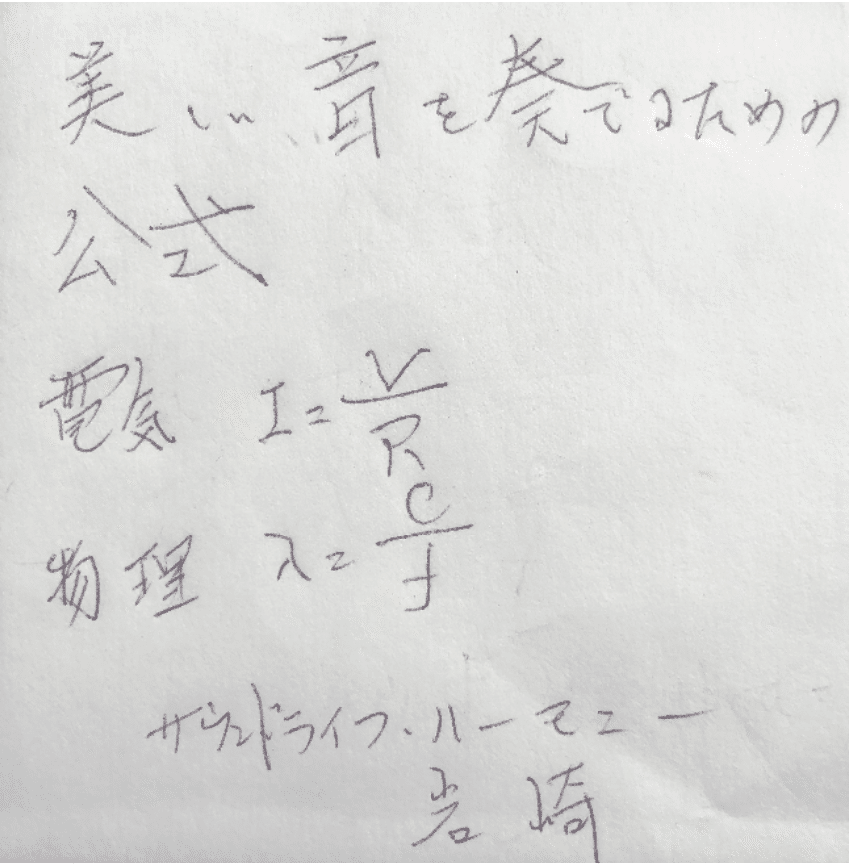
From Collecting Junk to Making Amplifiers, Sound Life Harmony
A 56-minute walk from Isawa Onsen Station, Sound Life Harmony is a small coffee shop and audio workshop in Yamanashi Prefecture. I first came across this cafe at Jazz Kissa Umi in Saitama from Ontomo Mook magazine's special feature Good Sound, Good Place, Good Shop. It has been etched in my mind ever since. That day, I went on an adventure to visit Sound Life Harmony with a lady who had a pink suitcase. Even though we heard it is challenging to hitchhike in Japan, three cars stopped within five minutes. It took us six hours from our departure at Shinjuku Station, with a vital onsen break in between.

The master, Iwasaki-san used to work at TEPCO, Tokyo Electric Power Company, as an engineer. He retired at 50 years old in 2011 to open his cafe. We couldn’t resist going around and staring at the vacuum cubes and unknown machines. The pink suitcase lady crouched down and tried to put her head into the lower horn. I was startled instantly. I dragged her out and whispered, "We have to respect the speakers!”

12 months later, I called him to ask if I could have a conversation with him, and to my surprise, he remembered me and happily said yes. We tried to use Google Hangouts, but as I was waiting in the meeting room, he said the screen froze, so we went back to the basics and used email instead.
To delve into Iwasaki-san’s life with audio, we have to rewind in time to his first record — Mari Amachi’s Chiisana Koi, Hitori Ja Nai No (Little Crush, Not Alone). A nationwide known 70s idol, Mari Amachi, was perhaps his tiny middle-school crush. Iwasaki-san thought of making her voice and background music more beautiful by drawing a richer bass and vivid treble. As simple as that, he began his first attempt at disassembling TV speakers.

The sixties and seventies it was the golden age of audio. It was the age to ‘custom’ assemble rather than acquire a whole audio set. Iwasaki-san collected junk from electronic stores in Kofu until he received formal education on speakers. Once he received his formal education on speakers, he realized the importance of a firm technological foundation. After locking down a job, he transformed from collecting junk to making amplifiers, and his set-up upgraded from TV speakers to speakers that separate high pitch and bass.
“When I don’t have money, building and destroying becomes my biggest asset, and making is fun.”
The process of “building and destroying” played a significant role in his daily life. Despite Iwasaki-san knowing the mechanisms by heart, making amplifiers remains an arduous road. If one uses complex circuits, the sound becomes the sound of the amplifier; the key is not to produce noise or distortion that the music does not obtain originally. If he feels something different, he starts building and destroying. He recalled, “It was a time when I spent fruitless time and money for 15 years.” As a result, his proudest work is his amplifiers which produce minimal noise.

“The Goto Unit of the horn speakers have high efficiency exceeding 110dB, it expresses the delicacy, speed and atmosphere that are indispensable for music.”
“To reproduce sound, various electrical parts and magnets are required from amplifiers to speakers but may act as noise or distortion. A highly efficient speaker requires a small amount of power to produce the same sound volume, and the amplifier's parts can be significantly reduced. Sound comes from vibrations of the ear from the speaker. If the vibration board is lighter, a more vivid sound quality emerges. Imitating other people’s circuits when you make amplifiers will create an opposite effect due to differentiating factors, such as the room or volume.”

No matter how vital audio is, having a space with the right acoustics for audio is crucial. Somehow the memory of sound-absorbing materials from Cafe Royce in Iwate Prefecture I visited a month ago, flashed through my mind. Then all of a sudden, I ducked under to check the bottom of the chairs and tables. Indeed, there were clothes under a few chairs to achieve reverberation. Even the thickness of the wallpaper was thoroughly thought out, and there were sound absorption and reflection boards on the wall and ceilings to control flutter echo.

I remember the first time I visited Sound Life Harmony, he was sitting in his music spot on a high stool at the back of the room, away from the tables. He told me this cafe is for a laid-back atmosphere with a soft sound. When we were talking on the phone, he insisted again that this is not a place to play music loudly, but a soft, soft sound! It is fun to imagine where you are sitting at the live performance. He said, “For myself, I am drinking coffee in the hotel lobby where they are playing the piano. But actually, I’d prefer whisky or gin on the rocks.”


この記事が気に入ったらサポートをしてみませんか?
